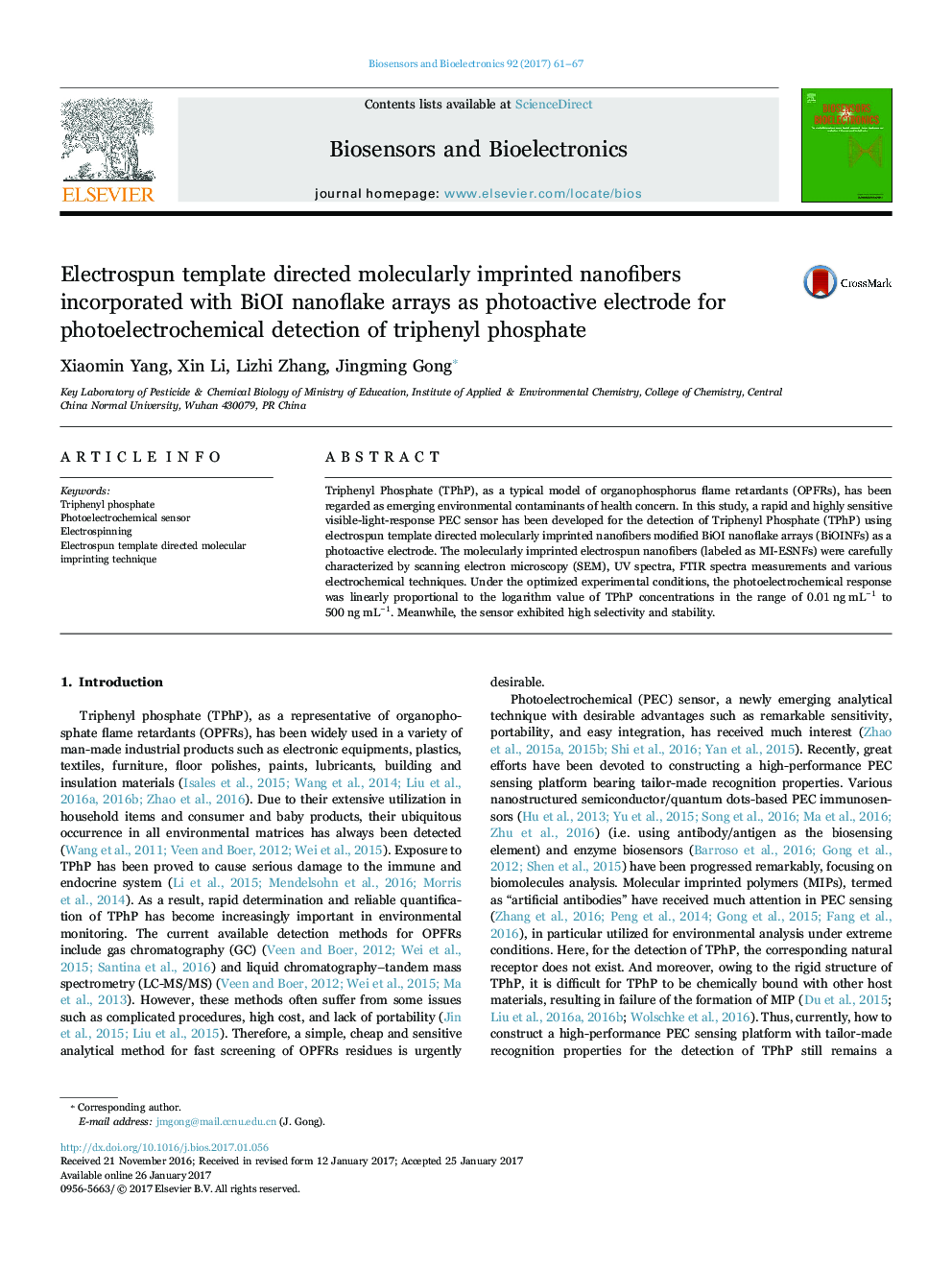| Article ID | Journal | Published Year | Pages | File Type |
|---|---|---|---|---|
| 5031577 | Biosensors and Bioelectronics | 2017 | 7 Pages |
Abstract
Triphenyl Phosphate (TPhP), as a typical model of organophosphorus flame retardants (OPFRs), has been regarded as emerging environmental contaminants of health concern. In this study, a rapid and highly sensitive visible-light-response PEC sensor has been developed for the detection of Triphenyl Phosphate (TPhP) using electrospun template directed molecularly imprinted nanofibers modified BiOI nanoflake arrays (BiOINFs) as a photoactive electrode. The molecularly imprinted electrospun nanofibers (labeled as MI-ESNFs) were carefully characterized by scanning electron microscopy (SEM), UV spectra, FTIR spectra measurements and various electrochemical techniques. Under the optimized experimental conditions, the photoelectrochemical response was linearly proportional to the logarithm value of TPhP concentrations in the range of 0.01 ng mLâ1 to 500 ng mLâ1. Meanwhile, the sensor exhibited high selectivity and stability.
Related Topics
Physical Sciences and Engineering
Chemistry
Analytical Chemistry
Authors
Xiaomin Yang, Xin Li, Lizhi Zhang, Jingming Gong,
